
Writing Craft - Books!
Let’s talk books! Specifically writing craft books. As writers, wanting to improve our art is natural, and learning from the insights – and the mistakes – of others is one of the quickest ways to do that.
It’s no surprise that my own writing manual is my favorite. Obviously, it reflects the way my mind works, and the hard lessons about craft that I have learned along the way. If you like worksheets and detailed instructions, I hope you consider Story Like a Journalist. It’s a different take from most writing manuals, because it encourages you to look at your fictional world as though it was real and ask the questions reporters ask. It’s a method that requires planning, but the worksheets can also be used by discovery writers to go back and find the structure and meaning in the draft they have just created.
Story Like a Journalist by Amber Royer
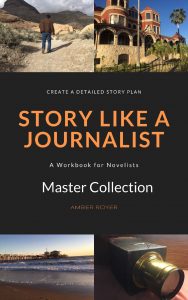 Story Like a Journalist synthesizes decades of learning about writing, coaching authors and teaching. Because I am always looking for new takes on creativity and writing craft, I may have a slight addiction to writing manuals. I love the way each has a different focus and a different purpose. It’s like learning from different teachers with different perspectives.
Story Like a Journalist synthesizes decades of learning about writing, coaching authors and teaching. Because I am always looking for new takes on creativity and writing craft, I may have a slight addiction to writing manuals. I love the way each has a different focus and a different purpose. It’s like learning from different teachers with different perspectives.
Here are ten of my favorites, which – in addition to Story Like a Journalist – make for a well-rounded writer’s bookshelf. (Obviously, there are more great books than would fit on this list. The links below are affiliate links, but I personally own copies of all of these books.)
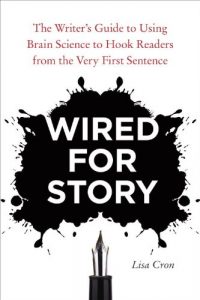 This book takes the well-worn advice most writers receive (ex. Show don’t tell) and gives the psychological reasons WHY readers respond to these techniques. I believe that writing is about controlling what and when you introduce information in order to teach readers about your story world and your plot in a logical progression – and this book helped me see how writers interact with readers minds.
This book takes the well-worn advice most writers receive (ex. Show don’t tell) and gives the psychological reasons WHY readers respond to these techniques. I believe that writing is about controlling what and when you introduce information in order to teach readers about your story world and your plot in a logical progression – and this book helped me see how writers interact with readers minds.
Story Engineering by Larry Brooks
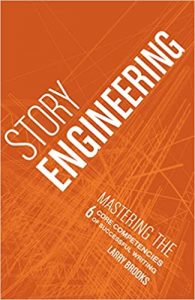 A lot of writers have trouble with act 2, and as a new writer I was one of them. This book revolutionized the way I thought about plot, because once you understand the purpose of each act, and of important scenes within the act, figuring out what does or does not belong in your manuscript becomes much easier.
A lot of writers have trouble with act 2, and as a new writer I was one of them. This book revolutionized the way I thought about plot, because once you understand the purpose of each act, and of important scenes within the act, figuring out what does or does not belong in your manuscript becomes much easier.
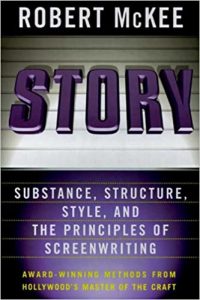 This one is intended for screenwriters, but the lessons here are applicable to novels as well. It is worth the read just for what he has to say about scenes requiring emotional state change. Understanding how readers are going to react to characters who DON’T experience emotional change can shift the way you think out scenes and make them deeper.
This one is intended for screenwriters, but the lessons here are applicable to novels as well. It is worth the read just for what he has to say about scenes requiring emotional state change. Understanding how readers are going to react to characters who DON’T experience emotional change can shift the way you think out scenes and make them deeper.
Dynamic Characters by Nancy Kress
 You know characters are the key to getting readers to care about your story, and that specifics are the key to making characters feel like real people. This book helps you figure out what those specifics should be, from both an internal psychological viewpoint and an external take.
You know characters are the key to getting readers to care about your story, and that specifics are the key to making characters feel like real people. This book helps you figure out what those specifics should be, from both an internal psychological viewpoint and an external take.
What Would Your Character Do? by Eric Masel
 This book presents scenarios and then lets you fill them in with multiple choice reactions based on what you feel your story’s character would do in the given situation. When I first came across this book as a new-ish writer, it was eye-opening how little I actually knew about my characters outside the confines of the roles I had designed for them in the story. I did find the multiple choice somewhat limiting (the character in question was a borderline space pirate, and the book didn’t really allow for his sense of morality), so when I did some worksheets in my workbook on character decision making, I left the questions open-ended.
This book presents scenarios and then lets you fill them in with multiple choice reactions based on what you feel your story’s character would do in the given situation. When I first came across this book as a new-ish writer, it was eye-opening how little I actually knew about my characters outside the confines of the roles I had designed for them in the story. I did find the multiple choice somewhat limiting (the character in question was a borderline space pirate, and the book didn’t really allow for his sense of morality), so when I did some worksheets in my workbook on character decision making, I left the questions open-ended.
The Emotion Thesaurus by Becca Puglisi and Angela Ackerman
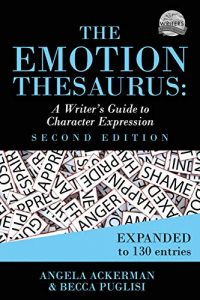 Part of showing and not telling involves getting inside the character to detail emotions, motivations and physical sensations. All of this really helps the character come alive. If you need help brainstorming aspects of this (ex. – What would a reporter really feel emotionally and internally if she got a call from a potentially dangerous source that could give her the story that would make her career), The Emotion Thesaurus can help you reach past the obvious.
Part of showing and not telling involves getting inside the character to detail emotions, motivations and physical sensations. All of this really helps the character come alive. If you need help brainstorming aspects of this (ex. – What would a reporter really feel emotionally and internally if she got a call from a potentially dangerous source that could give her the story that would make her career), The Emotion Thesaurus can help you reach past the obvious.
Write the Fight Right by Alan Baxter
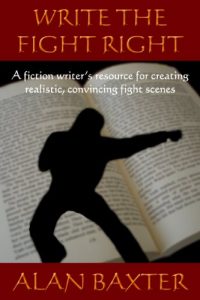 Writers in most genres are eventually going to have to write some kind of action scene. This book helps you think about the physics that goes into writing a believable scene, as well as how to write the disorientation and stress that emotionally goes into such scenes.
Writers in most genres are eventually going to have to write some kind of action scene. This book helps you think about the physics that goes into writing a believable scene, as well as how to write the disorientation and stress that emotionally goes into such scenes.
Writing the Breakout Novel by Donald Maas
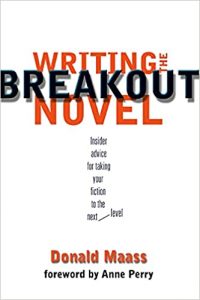 This is one of the first writing manuals I read. And the idea of writing characters and situations that are somehow larger than life holds true today. If you really want to understand premise, this is a good place to start.
This is one of the first writing manuals I read. And the idea of writing characters and situations that are somehow larger than life holds true today. If you really want to understand premise, this is a good place to start.
Steal Like an Artist by Austin Kleon
 This is a different kind of book. It’s a manual for gaining confidence in your own creativity, and embracing your influences without becoming derivative. It’s also just plain fun to read.
This is a different kind of book. It’s a manual for gaining confidence in your own creativity, and embracing your influences without becoming derivative. It’s also just plain fun to read.
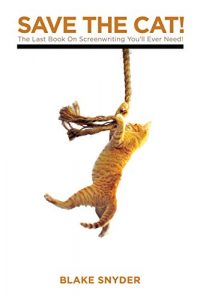 This is another one meant for screenwriters (though the concepts are solid enough for novelists that Jessica Brody adapted it into Save the Cat Writes a Novel). Snyder has a whole different way to look at genre. Understanding what it really means to have a character save the cat or kick the dog was a gamechanger for me, especially when it comes to writing unlikeable characters.
This is another one meant for screenwriters (though the concepts are solid enough for novelists that Jessica Brody adapted it into Save the Cat Writes a Novel). Snyder has a whole different way to look at genre. Understanding what it really means to have a character save the cat or kick the dog was a gamechanger for me, especially when it comes to writing unlikeable characters.

